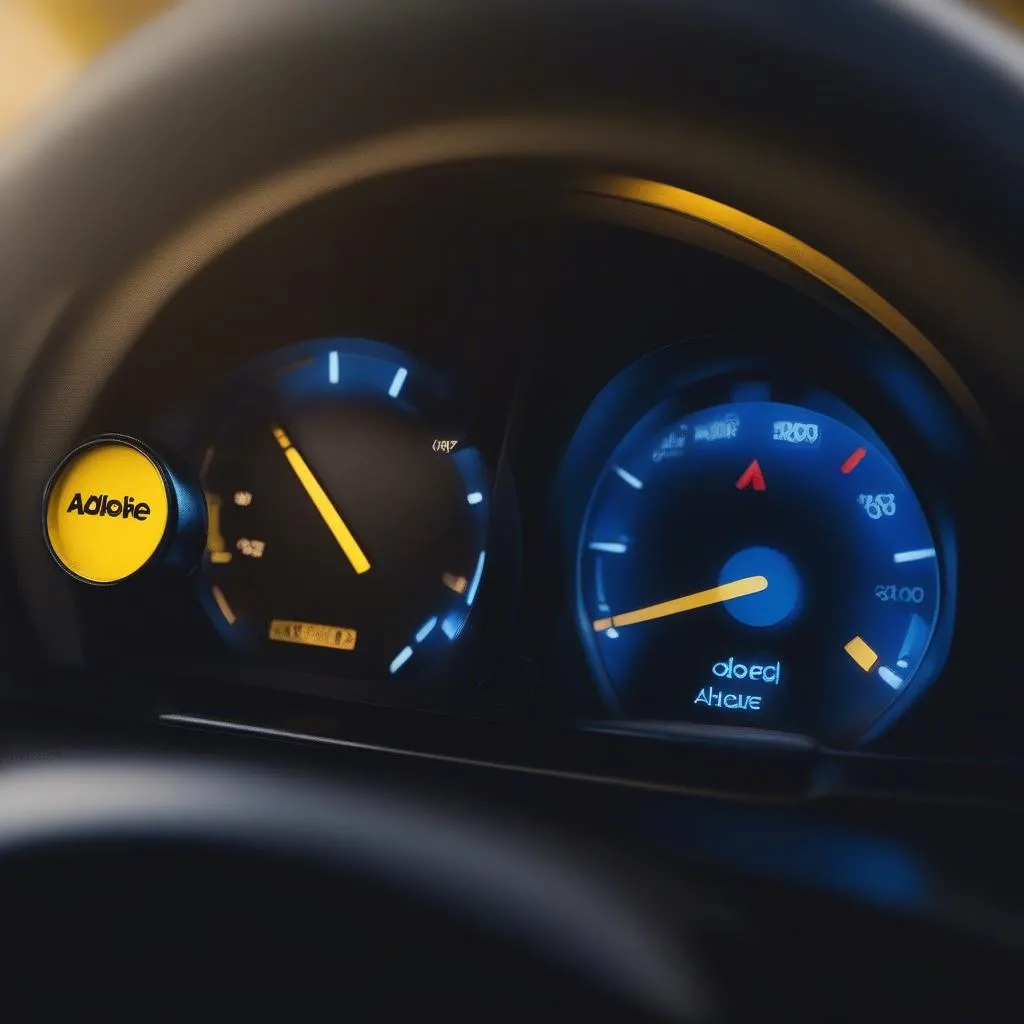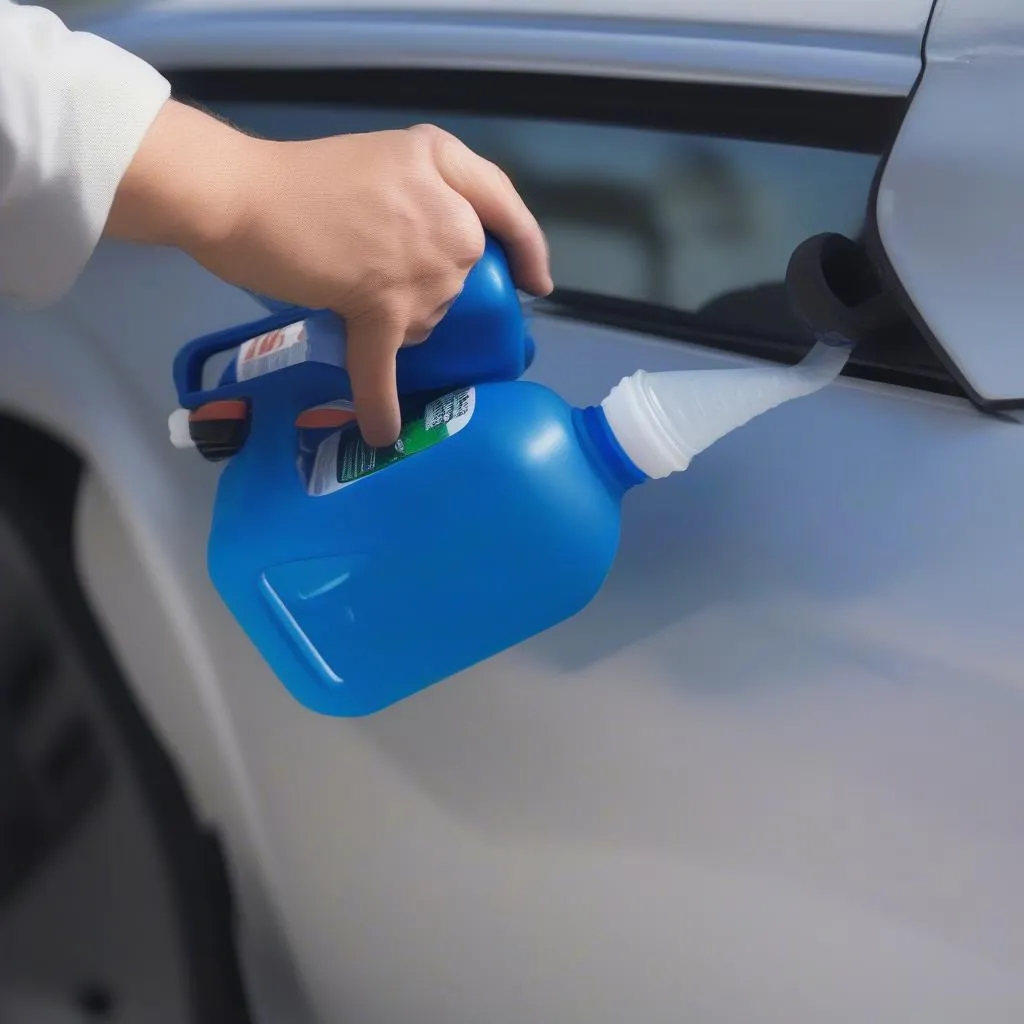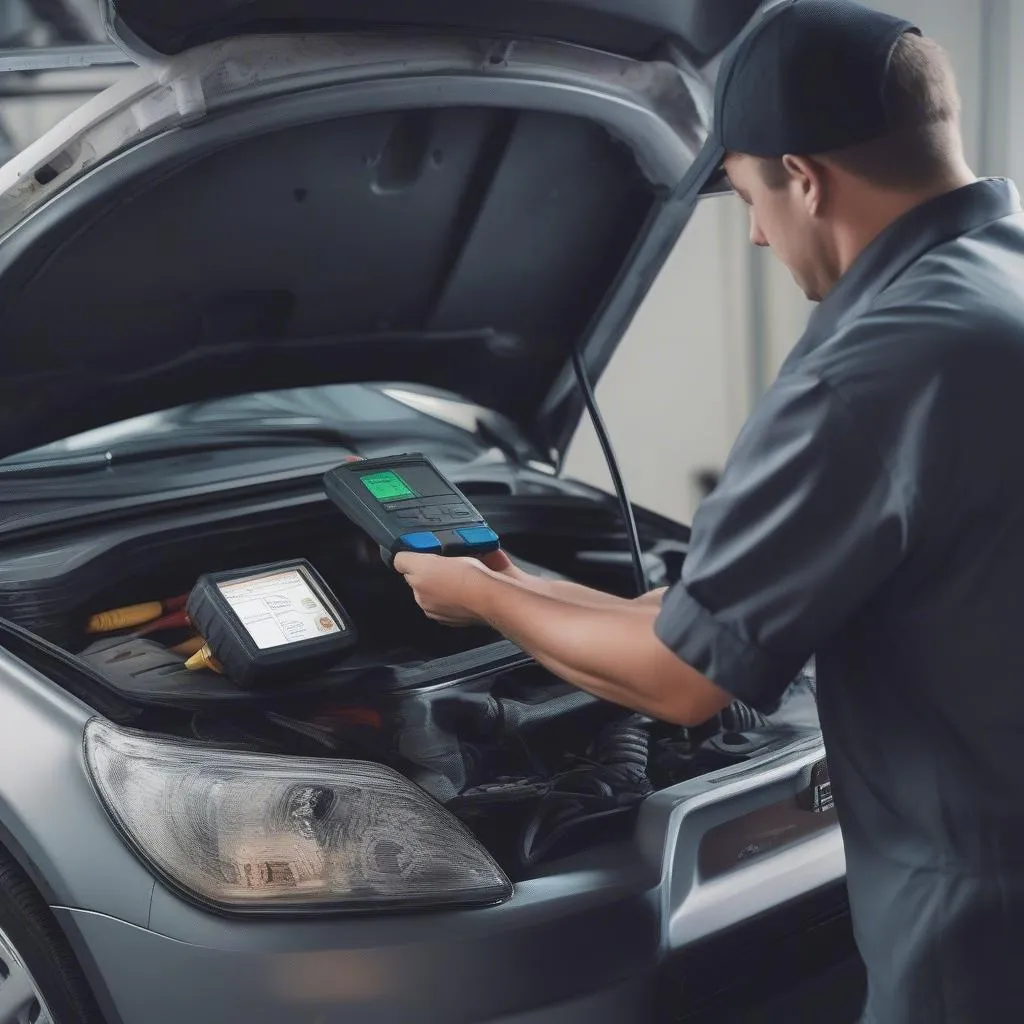Seeing a warning light on your dashboard can be concerning, especially one related to your emissions system. If you’re wondering, “Is There An Adblue Warning Light?”, the answer is yes. Many modern diesel vehicles utilize AdBlue, also known as Diesel Exhaust Fluid (DEF), to reduce harmful emissions. This article will shed light on AdBlue warning lights, their implications, and what steps you can take to address them.
What Triggers an AdBlue Warning Light?
Your vehicle’s AdBlue system is designed to monitor the AdBlue level, quality, and the system’s overall health. Here are the common reasons why an AdBlue warning light might illuminate:
- Low AdBlue Level: As you drive, your car consumes AdBlue. When the level gets too low, a warning light will appear on your dashboard.
- AdBlue System Malfunction: Issues like a faulty sensor, a problem with the AdBlue injector, or a leak in the system can trigger the warning light.
- Poor AdBlue Quality: Using contaminated or incorrect AdBlue can also cause issues and activate the warning light.
Recognizing an AdBlue Warning Light
The AdBlue warning light can vary in appearance depending on your car’s make and model. It often resembles one of the following:
- A pictogram of a fuel pump nozzle with liquid dripping
- The text “AdBlue” accompanied by a warning symbol
- A generic engine warning light
Consult your vehicle’s owner’s manual to identify the specific AdBlue warning light for your car model.
 AdBlue Warning Light
AdBlue Warning Light
What You’ll Need to Address AdBlue Issues
Addressing AdBlue issues might require some tools and resources:
- AdBlue Refill: If your AdBlue level is low, you’ll need to refill the AdBlue tank.
- Diagnostic Scanner: A diagnostic scanner, like those offered by Cardiagtech, can read and clear fault codes related to the AdBlue system. This helps pinpoint the root cause of the warning light.
- Mechanic: For complex AdBlue system repairs, it’s best to seek professional assistance from a qualified mechanic.
 AdBlue Refill
AdBlue Refill
Steps to Troubleshoot an AdBlue Warning Light
- Check Your Owner’s Manual: Your owner’s manual is the first place to consult. It will provide specific information about the AdBlue system and any warning lights related to it.
- Refill AdBlue If Necessary: If your AdBlue level is low, refill it with the correct AdBlue solution as recommended by your vehicle manufacturer.
- Use a Diagnostic Scanner: A diagnostic scanner can identify the specific fault code triggering the AdBlue warning light. This helps determine the appropriate course of action.
- Reset the System (If Applicable): After addressing the root cause (like refilling AdBlue or fixing a leak), you might need to reset the AdBlue system. You can often do this using a diagnostic scanner, or sometimes by following a specific procedure outlined in your owner’s manual.
- Seek Professional Help: If the warning light persists or you suspect a more serious issue with the AdBlue system, it’s crucial to consult a qualified mechanic.
 Car Diagnostic
Car Diagnostic
Frequently Asked Questions
Here are some common questions related to AdBlue warning lights and systems:
Q: Can I continue driving with the AdBlue warning light on?
A: It depends on the severity. Some vehicles have a limited driving range once the AdBlue warning light comes on. However, continuing to drive with an active AdBlue warning can potentially damage your emissions system and could even prevent your car from starting. It’s best to address the issue promptly.
Q: How often do I need to refill AdBlue?
A: AdBlue consumption varies depending on driving conditions and vehicle model. However, you’ll generally need to refill it between service intervals. Consult your owner’s manual for specific guidance.
Q: Can I reset the AdBlue warning light myself?
A: In some cases, yes. You can often reset the warning light using a diagnostic scanner or by following a reset procedure in your owner’s manual.
Q: Where can I learn more about AdBlue systems and troubleshooting?
A: For more in-depth information on AdBlue systems, troubleshooting tips, and access to high-quality diagnostic equipment, visit Cardiagtech. Our website offers a wealth of resources to help you understand and maintain your vehicle’s emissions system.
Conclusion
Understanding your car’s AdBlue system and how to respond to warning lights is essential for maintaining its performance and complying with emissions regulations. By taking the appropriate steps, whether it’s refilling AdBlue, using a diagnostic scanner, or consulting a mechanic, you can ensure your vehicle runs smoothly and efficiently.
If you’re seeking reliable diagnostic tools or expert advice on automotive software, programming, or remote diagnostics, don’t hesitate to reach out to CARDIAGTECH. We’re here to assist you with all your automotive diagnostic needs.
